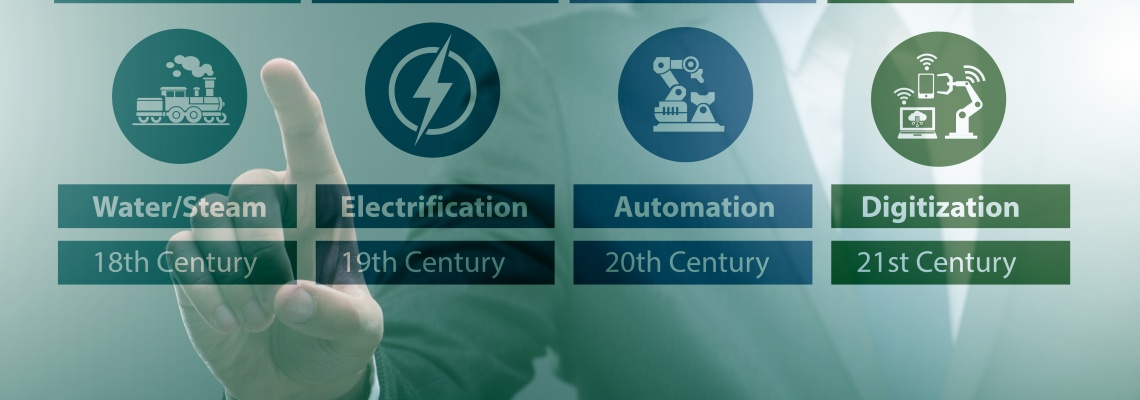Introduction
Heavy equipment manufacturing is evolving rapidly with the adoption of Industrial IoT (IIoT), predictive analytics, and AI-powered insights. These advanced technologies are reshaping production processes, enhancing efficiency, reducing costs, and helping manufacturers maintain a competitive edge.
By leveraging real-time data, automation, and intelligent decision-making, manufacturers can optimize their operations, improve equipment reliability, and ensure seamless production. This blog explores how digital transformation is revolutionizing heavy equipment manufacturing.
The Role of Industrial IoT in Heavy Equipment Manufacturing
The Industrial Internet of Things (IIoT) enables factories to connect machinery, sensors, and systems to collect and analyze real-time data. Key benefits include:
1. Smart Asset Management & Monitoring
- IIoT sensors track the health and performance of heavy machinery in real-time.
- Enables predictive maintenance, reducing unexpected breakdowns and downtime.
- Enhances remote monitoring, allowing manufacturers to oversee equipment performance from anywhere.
2. Real-Time Production Optimization
- Connected machines can self-adjust to optimize efficiency.
- IIoT provides insights into bottlenecks, helping manufacturers improve workflow.
- Automated alerts notify teams of maintenance needs before failures occur.
3. Enhanced Supply Chain Visibility
- IIoT enables real-time tracking of raw materials, components, and finished products.
- Reduces inventory wastage and improves supply chain agility.
- Optimizes procurement processes by analyzing historical and real-time data.
Predictive Analytics: Maximizing Efficiency & Reducing Costs
Predictive analytics leverages big data, machine learning, and AI-driven insights to optimize manufacturing processes. Here’s how it transforms heavy equipment production:
1. Failure Prevention & Predictive Maintenance
- AI-powered models analyze sensor data to detect early signs of equipment failure.
- Reduces unplanned downtime, saving significant repair costs.
- Extends equipment lifespan through data-driven maintenance schedules.
2. Process Optimization & Cost Reduction
- Real-time analytics help identify inefficiencies in production lines.
- AI-driven recommendations improve resource utilization and minimize waste.
- Optimizes energy consumption, reducing operational expenses.
3. Quality Assurance & Defect Detection
- AI-driven computer vision systems inspect heavy equipment components for defects.
- Reduces waste and ensures consistent product quality.
- Enhances compliance with industry safety and quality standards.
AI-Powered Insights: Driving Smarter Decision-Making
Artificial Intelligence (AI) is revolutionizing how manufacturers analyze data and optimize operations. Key benefits include:
1. Intelligent Automation
- AI-driven robots and automation systems streamline assembly line operations.
- Reduces manual errors and improves efficiency.
- Enhances worker safety by handling hazardous tasks.
2. Digital Twins for Virtual Prototyping
- Digital twin technology allows manufacturers to create virtual models of equipment.
- Simulates real-world performance to optimize design and reduce production errors.
- Accelerates innovation by testing equipment before physical production.
3. AI-Based Demand Forecasting
- AI analyzes market trends and historical data to predict demand fluctuations.
- Helps manufacturers adjust production schedules to meet market needs.
- Reduces excess inventory while ensuring timely deliveries.
The Future of Heavy Equipment Manufacturing
As digital transformation continues, heavy equipment manufacturing will see even more innovations:
1. Fully Connected Smart Factories
- Real-time data exchange between machines, workers, and suppliers.
- Seamless coordination between production, maintenance, and supply chain management.
2. Sustainability & Energy Efficiency
- AI-powered analytics optimize energy consumption.
- Smart manufacturing practices reduce carbon footprints and material waste.
- Adoption of renewable energy sources in production facilities.
3. Advanced Human-Machine Collaboration
- AI-driven collaborative robots (cobots) work alongside human workers.
- Improves productivity and worker safety.
- Enables remote operations with augmented reality (AR) and virtual reality (VR) tools.
Conclusion
The digital transformation of heavy equipment manufacturing is revolutionizing production processes through IIoT, predictive analytics, and AI-powered insights. By leveraging these technologies, manufacturers can improve efficiency, reduce costs, enhance product quality, and maintain a competitive edge.
As Industry 4.0 continues to evolve, companies that embrace digital transformation will lead the future of heavy machinery manufacturing. Now is the time to invest in smart manufacturing technologies and stay ahead of the competition!



